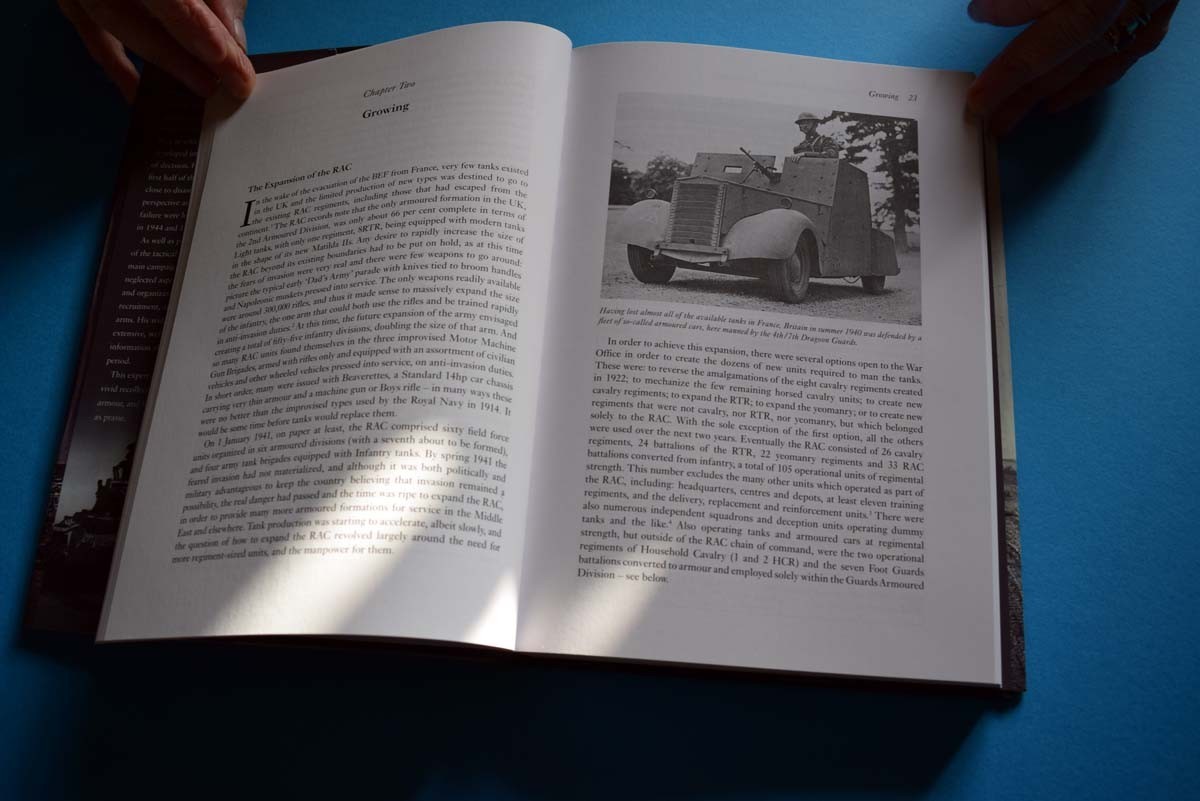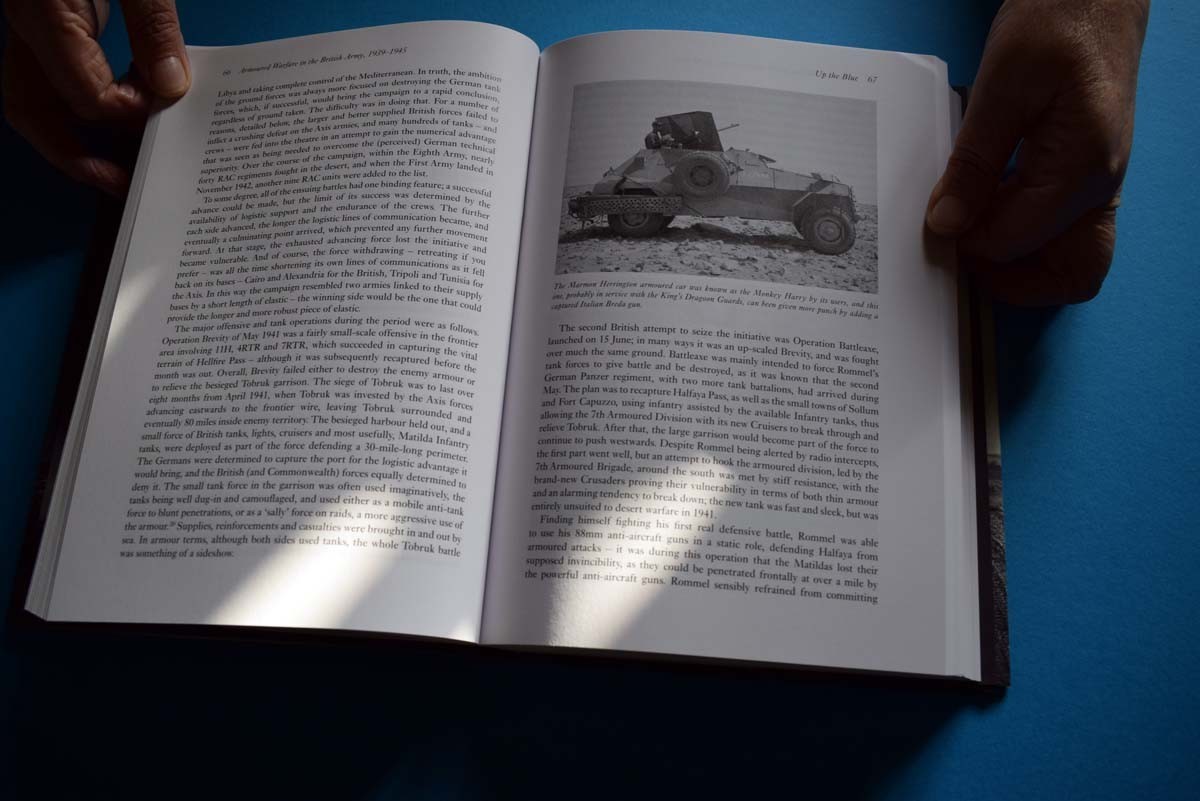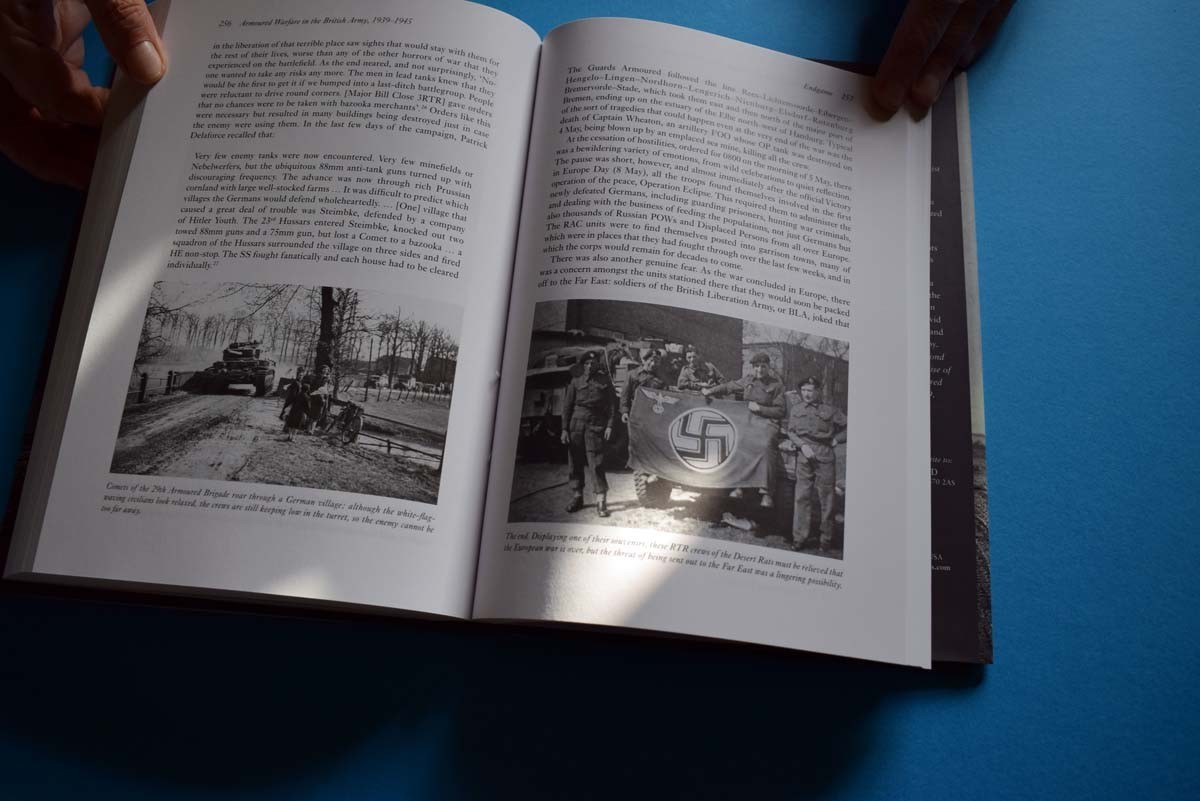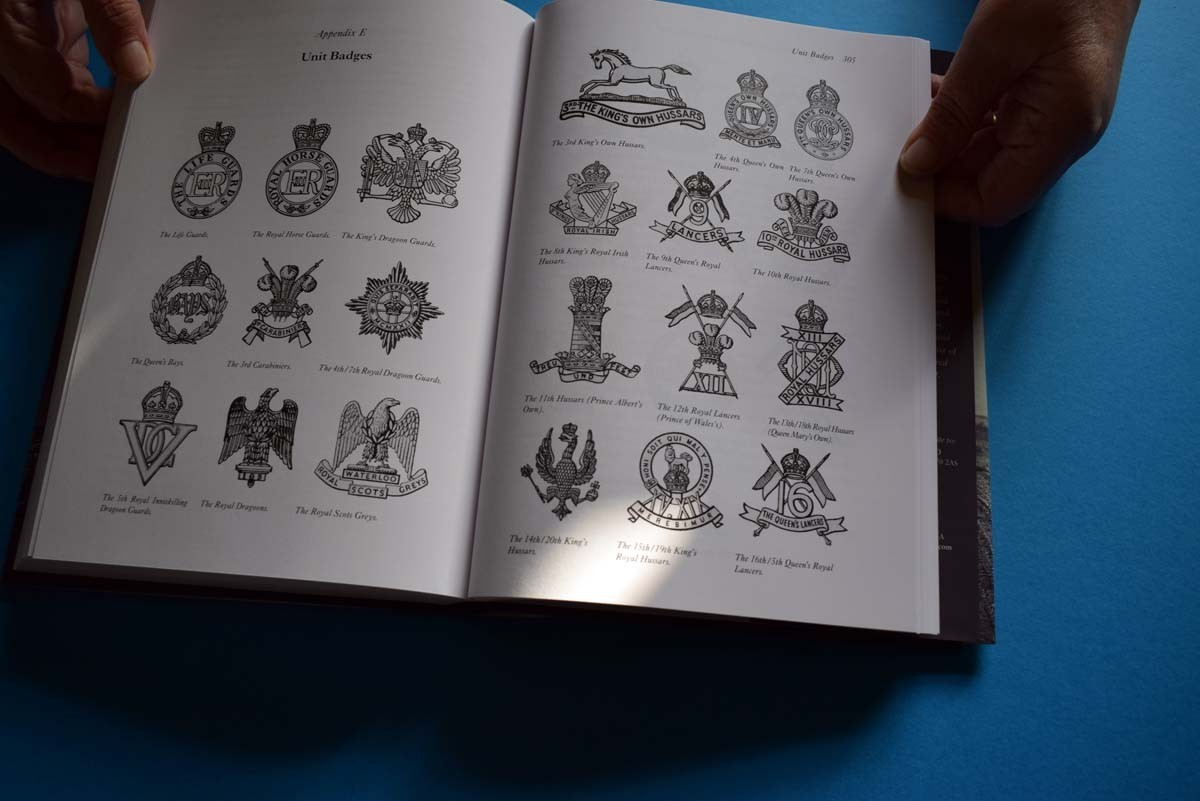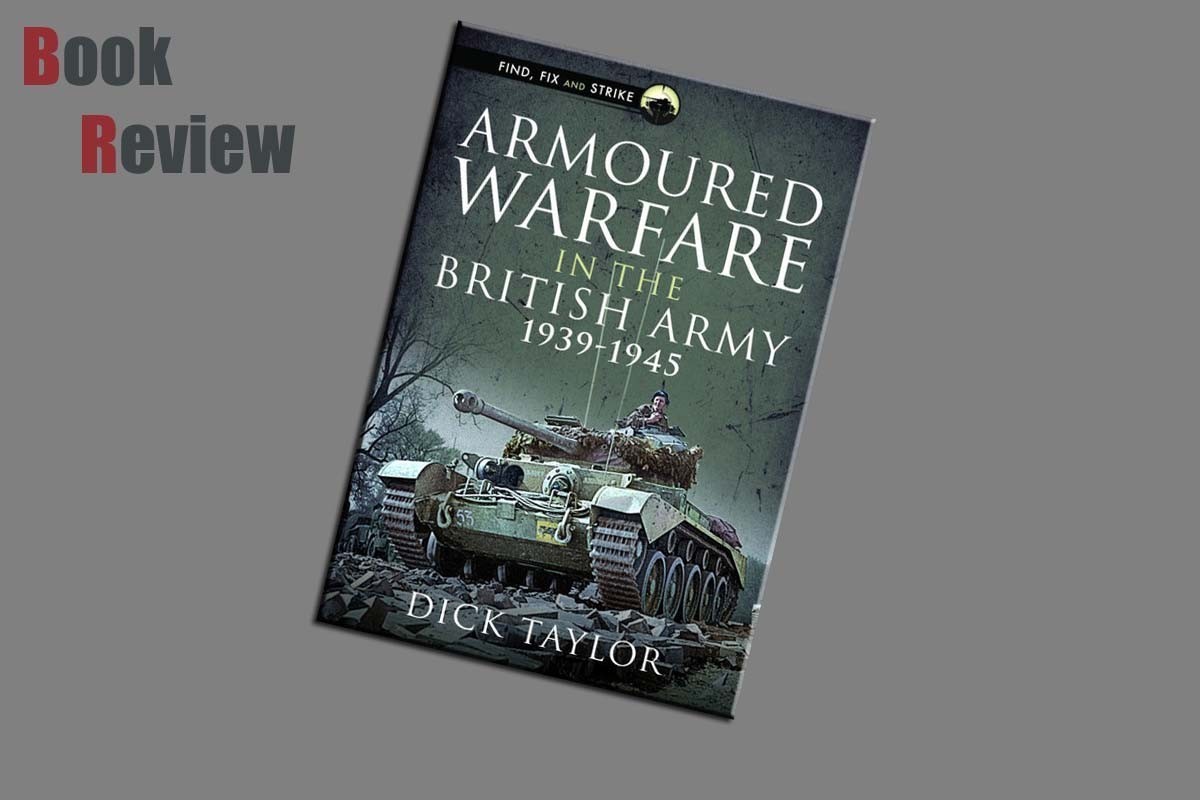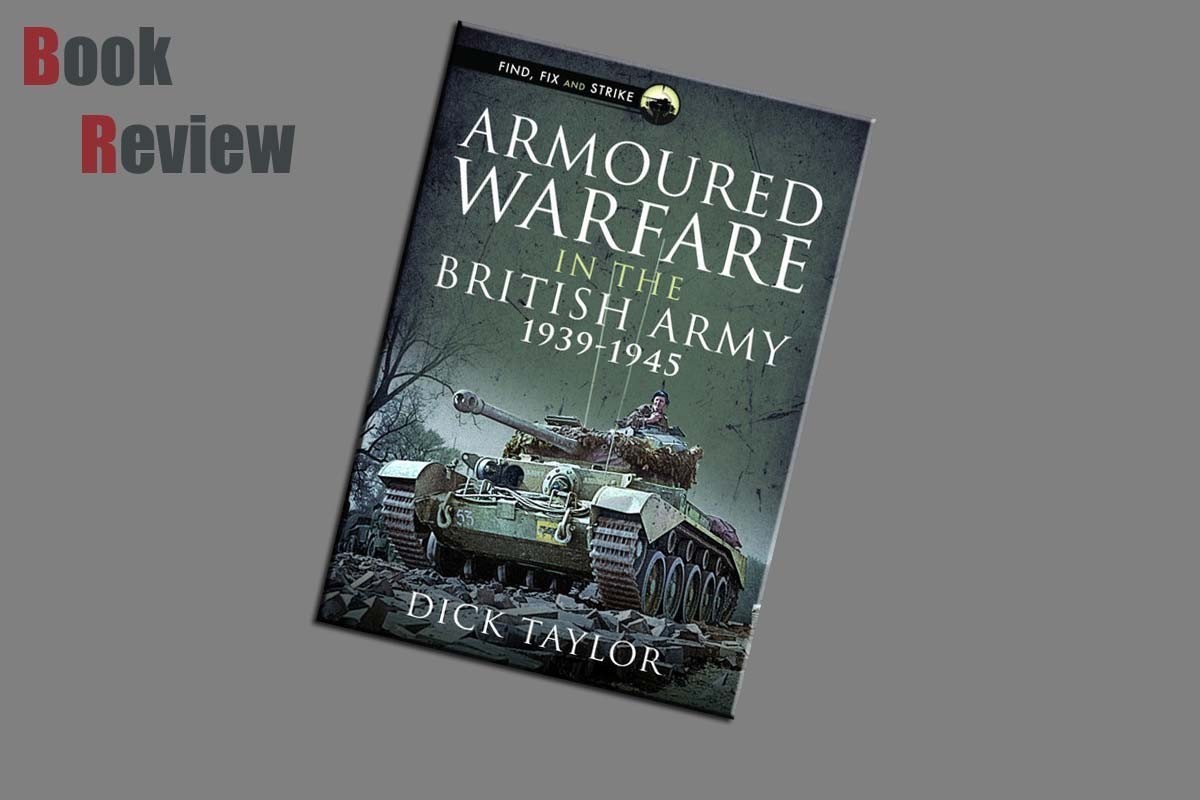
Introduction
The following introduction is taken from the Pen and Sword website:
The second volume in Dick Taylor’s three-volume illustrated history of the evolution of armoured manoeuvre warfare in the British army covers the period of the Second World War, in which the tank came of age and developed into the principal land weapon of decision. He describes how, during the first half of the war, the British army came close to disaster from the armoured warfare perspective and how the bitter lessons of failure were learned in time to deliver success in 1944 and 1945.
As well as providing a fascinating overview of the tactical use of armour during the main campaigns, he considers such much-neglected aspects as the role of training and organization, officer selection and recruitment, and the mechanization of other arms. His wide-ranging book also features extensive, well-laid-out tables giving key information about British armour during this period.
This expert account quotes heavily from the vivid recollections of soldiers who served in armour, and is not afraid to criticize as well as praise.
Review
This offering from Pen and Sword and authored by Dick Taylor is the second title in a series looking at the British Army and how they conducted armoured warfare. This hard-backed offering of the title, consists of 360 pages and 100 illustrations. The book is robust and has a nice dust cover provided. The paper in the book is of a good quality, with the information presented on satin finished paper. This title looks at World War II from the start to finish.
The content of this release is presented over 9 chapters, which are further broken down into many sub-sections. The main chapters are:
The Beginning
Growing
Up the Blue
Doctrine and Design
The Mediterranean Campaign
The Design and Doctrine
The Decisive Campaign
Endgame
Conclusion
The text in this title appears to be well written, and does a good job of taking you on a walk through the subject. The font, style and size assists in making the book easily read with the text presented in a standard history style, but also some of the stories of the men, is provided giving context to the history. The aspects of the writing I particularly liked is where the written content is the written words of the men who were there, as I believe that these aspects of the book provide the reader with the best insight into the life and times of this conflict where armoured warfare is concerned.
The period black and white photographs have been chosen to present different aspects of life serving in the armoured units of the British army. Also, liberally presented, are the vehicles the British army utilised and some of the foes that they were stacked against. The captions are of a reasonable length, and also do a reasonable job of telling you about what you are looking at. I would have liked to have seen more photographs in the title, not because it needs them, but because it helps to break up the text and makes reading of a book less intimidating.
Conclusion
This offering from Pen and Sword, in the Find, Fix and Strike series of books and looking at armoured warfare in the British army during World War II is well written and well presented. I myself, found the content that was presented by the men who were there and also where their words have been presented by the author the most entertaining. It needs to be remembered, that World War II is moving from the realm of lived history to written history, and I would urge anyone with an interest in the British army during World War II and specifically armoured warfare, give serious consideration to this title and others in the series.
